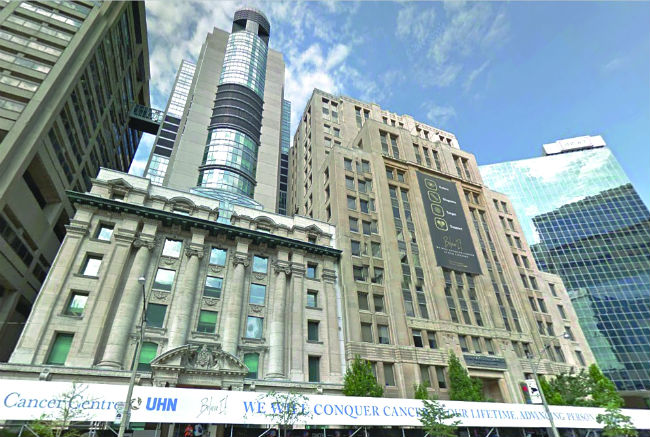Design thinking cuts through change and disruption to guide businesses towards an effective culture

Technology has turned the world of business upside down over the past half century, according to Mark Leung, director of Rotman DesignWorks at the University of Toronto.
And in order for companies to enjoy continued profitability and longevity, it’s important for leaders to return to a human-centred approach to innovation, he said.
In a world of near-constant change and disruption, design thinking helps businesses create or improve a culture of greater effectiveness, said Leung, speaking at a recent Strategic Capability Network (SCN) event in Toronto.
“Design (thinking) is just a human-centred approach to problem-solving,” he said. “It’s about putting the person... at the centre of your decision-making process.”
Design thinking wasn’t on the radar 10 years ago, said Leung. But, today, innovation is linked to design under the premises of empathy, creativity, collaboration and understanding people first.
“We’re moving away from the traditional sense of design where you think of making things pretty,” he said. “A lot of the thinking of what goes into creating such beautiful products and designs can be brought into services and experiences, where you’re bringing all the touchpoints of your organization into one seamless product unto itself — that differentiated experience.”
Why is it important?
The average lifespan of a Fortune 500 company is currently 20 years or less, a far cry from the 1960s when the world’s largest organizations were profitable for 60 years, said Leung.
Technology, robotics and automation have played a major role in changing the landscape, empowering workers and consumers with more information than ever before, he said.
For instance, today’s job searchers are able to locate a specific company’s salary ranges, promotion schedules and internal culture reviews through a simple web search.
“Organizations can’t necessarily dictate what customers do anymore,” said Leung. “They have to develop a deeper level of understanding or insight into what makes people tick. You have to develop that street-level customer intimacy.”
“We’re living in a different world now. There’s constant social change… There’s going to be a call for greater transparency. Governments in particular are developing policies to actually address some of these new emerging trends and phenomena.”
No one is immune to disruption, he said.
“We can put our heads in the sand and not do anything about it, or we can actually embrace it and understand it, and innovate from that. What we’ve learned is just being big and being fast isn’t enough anymore. We, as organizations and practitioners, need to develop a deeper level of insight and create that agility to be able to take advantage of those learnings.”
The landscape of technology is changing constantly, said Michael Clark, director of business development at Forrest in Toronto, prior to Leung’s presentation.
“Design thinking has come into its own amongst this chaos,” he said. “Design thinking integrates intuitive and analytical ways of thinking — empathy, creativity, experimentation.”
“In a human capital perspective, design thinking moves HR away from building programs and processes into that new state we’re all reaching for right now, which has to do with creating employee experiences that are compelling and joyful and simple, but of course do actually drive towards more productivity and engagement.”
The design process
Every innovative solution requires ingredients of desirability, feasibility and viability, said Leung. The five-step process behind design thinking is intended to spur workers to creativity and collaboration, and works as follows:
1. Empathize: Design thinking starts with walking a mile in customers’ shoes and understanding their points of pain. Strive for less talking in favour of more listening in an attempt to feel, rather than simply checking off boxes.
2. Reframe: Effective design thinking looks at the user’s unmet needs alongside workplace effectiveness.
3. Ideate: This step is the creative process which imagines new possibilities.
4. Prototype: Make your ideas tangible.
5. Test: Try out your ideas to gauge success.
“It’s quite a simple process to follow,” he said. “It’s also an iterative process. It’s not linear, not static. You’re constantly jumping from one box to another as your learning evolves.”
Toronto’s Princess Margaret Cancer Centre was a recent benefactor of design thinking, said Leung, who was on a team redesigning the facility’s chemotherapy experience.
The process began with a clear choice to research using patient empathy over data, with designers choosing to see the experience through a cancer patient’s eyes — a “sobering experience,” he said.
“Quite quickly by empathizing, in a matter of an hour or two, you realize that patients are actually physically and mentally beat down before they even get their treatment.”
From there, the design process was reframed beyond simply creating a beautiful space to “helping patients turn lost time into found time,” said Leung.
Ideation included input from patients, staff and clinicians, before a prototype was created in an empty space within the hospital, where role-play ensured effectiveness prior to final implementation. A sophisticated blueprint was also created, defining the patient experience in detail, from home to hospital to checkout.
Success was inevitable, he said. “Everyone bought into this because they had a say in the actual design.”
Key takeaways
After leading SCN attendees through a 30-minute mock design-thinking process, Leung said the process works on a scalable timeline that could run anywhere from 10 minutes to six months in length.
Going forward, he recommended the following for HR practitioners employing design thinking:
Get out of the office: Listening to your users in a friendly space is a good start to the process, he said. “Go get a coffee, or go to their workplace and just have a chat.”
Create with your users: Seek out early input on your ideas and iterate quickly, said Leung. Design thinking is not a solo mission. “As human beings, we’re not as self-aware as we think we are. Sometimes, we need that third party to give a more objective lens.”
Perfection comes later: Go for quick wins, not home runs, he said. Strive to minimize the risk of failure and get better answers via prototypes.




